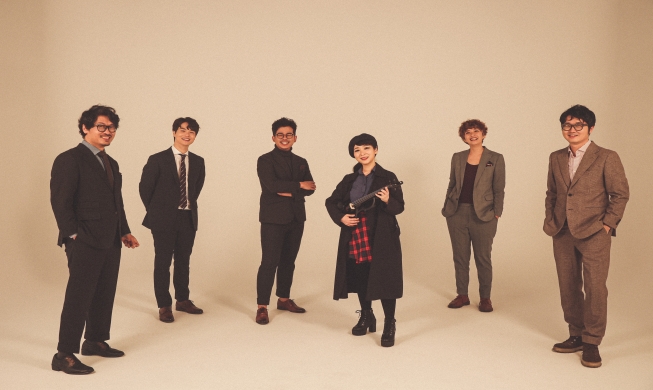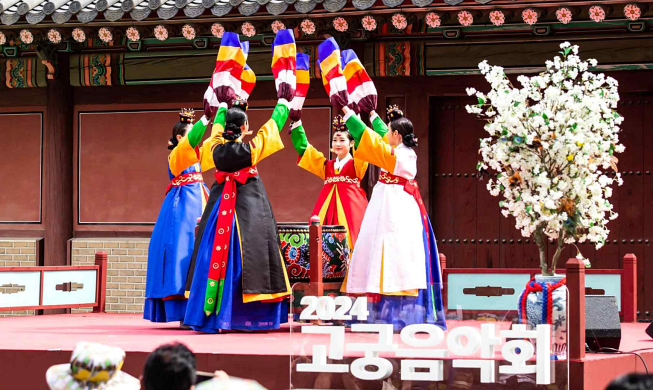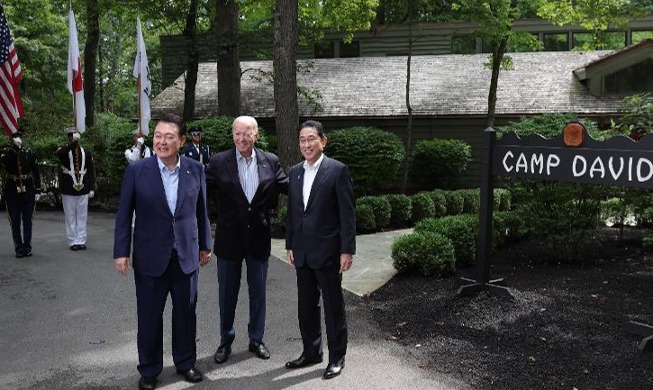-
 Korea.net's 24-hour YouTube channel
Korea.net's 24-hour YouTube channel- NEWS FOCUS
- ABOUT KOREA
- EVENTS
- RESOURCES
- GOVERNMENT
- ABOUT US

Bulguksa Temple’s two most famous features are the Dabotap Pagoda, the Pagoda of Many Treasures or of Multiple Jewels, and the Seokgatap Pagoda, the Sakyamuni Buddha Pagoda. They stand within the central courtyard in front of the historic main hall, dedicated to the Sakyamuni, one of the Buddha’s titles. When the Royal Asiatic Society brings visitors on its annual Gyeongju Tour, these are the most impressive monuments that we see.
Pagodas evolved from the ancient Hindu and Buddhist stupa funerary-monuments of northern India as the new faith spread along the Silk Road into China almost two millennia ago, becoming wooden and brick towers. In Korea, this architectural tradition evolved into solid granite pagodas, usually about three to seven meters tall, with hollow spaces in one of their lower stories to contain holy relics such as sarira crystals or sutra scriptures.
More than 1,000 of these remain extant today, especially common in the southern regions of Korea. However, the Dabotap Pagoda and the Seokgatap Pagoda tower over all the others as being the most excellent specimens for their complex ingenious architecture, profound philosophical depth and aesthetic charm. They are considered to be an inseparable and opposite-but-complimentary eum-yang pair, a yin-yang pair, standing together in view of the Buddha, offering all those who look upon them a lesson in monumental stone.
According to this view, the Dabotap Pagoda represents the eum characteristics of being female, dark, cold, of energy moving downward and inward, and of the transformation of heavenly principles into the myriad physical forms we enjoy on this earth. In contrast, the Seokgatap Pagoda represents the yang characteristics of being male, bright, hot, of energy moving upward and outward and of the spiritual aspirations of humankind.
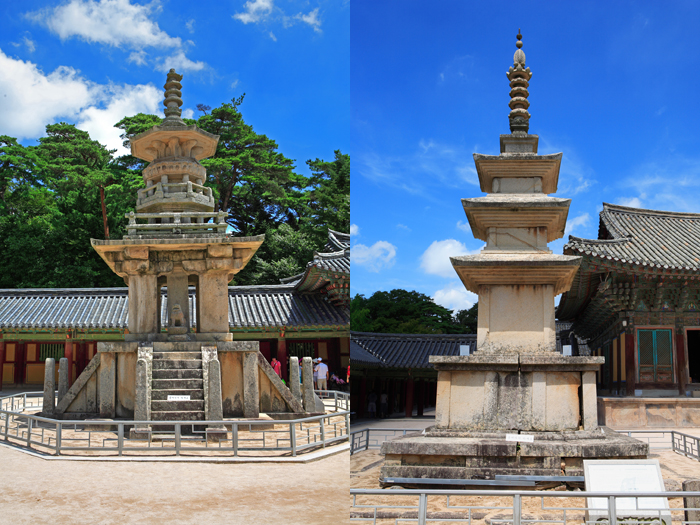
Another classical way of looking at their polarities is to interpret the Seokgatap Pagoda as the historical Buddha himself when he was teaching the Lotus Sutra, and the Dabotap Pagoda as his disciples listening to him. This is symbolized by the Dabo, or the Prabhutaratna Buddha-icon, which is said to manifest itself whenever and wherever the sutra is taught. The disciples are enlightened by the Buddha’s teachings and become beings who shine like precious jewels.
The Dabotap Pagoda or Many Treasures Pagoda is considered one of the most remarkable traditional structures in East Asia. Koreans are very proud of it and they depict it on their 10-won coin. Some 10.4 meters tall, this highly decorative pagoda's fame comes from its extremely complex and delicate philosophically-based design. At the base are four sets of steps, which lead to four lion guards, symbolizing wisdom in Buddhism. Above the lions are a number of well-fitted granite blocks. The pillars stand on an elevated platform approached by four staircases, each with ten steps signifying the Ten Perfections or Virtues, the paramitas, of Buddhist thought.
This pagoda has had an unfortunate modern history. It was disassembled by the Japanese for repair in 1924 when Korea was under colonial rule. As this grand-scale project was underway, the lack of thorough protection resulted in its inner sarira caskets and three of the original stone lions being stolen, and they have never been recovered.
The Seokgatap Pagoda, or Sakyamuni Buddha Pagoda, stands 8.2 meters tall and is the finest example of a typical Korean Buddhist pagoda, being the cumulative apogee of all the earlier tradition and the prototype for many subsequent constructions. It is also called the Muyeongtap Pagoda, or Pagoda Without a Reflection, denoting the sad legend of the Baekje stonemason, Asadal, who built these pagodas. An old myth says that his wife, Asanyeo, traveled from afar to be with him because she missed him so much, but he was not allowed to see her until the work was finished due to ritual-taboo restrictions. She waited by a pond across the valley, waiting for the top of this pagoda to appear above the temple walls in the reflection on the water, but when no such reflection came after many months, she threw herself into the pond in despair. Unfortunately, the Seokgatap Pagoda has been under repair since early 2013, so you cannot see it these days, just as poor Asanyeo was not able to witness its beauty.
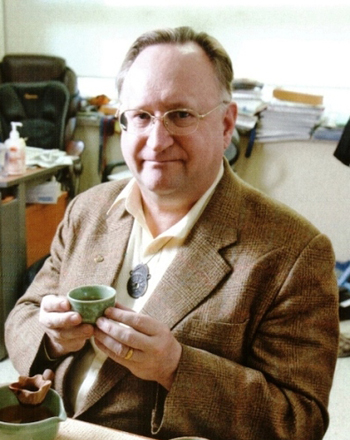
It is universally admired for its perfect proportions and its simple, graceful style. It has three main stories, like many of the pagodas from the Silla era, “three” being a sacred number in Buddhism and in many other spiritual traditions. In Buddhism, “three” symbolizes various triads, such as the Three Jewels of the Buddha himself, his Dharma teachings and the Sangha community of monks, or the corresponding division of Buddhist scriptures into sutras, sastras and vinaya, or the Cheon-Ji-In Trinity, the Heaven, Earth and Humanity Trinity, at the foundation of all Northeast Asian religious culture.
The Seokgatap Pagoda was first dismantled for repair in 1977. At that time, a collection of precious treasures was found inside, including a set of reliquary for sarira crystals and a paper scroll of the “True Words of Pure and Clean Light Scripture.” Scholars determined that this sutra was printed between 706 and 751, thus being the world's oldest extant xylographic publication.
These Buddhist pagodas are a symbolic expression of doctrine. The ideological underpinnings of the Dabotap Pagoda and the Seokgatap Pagoda are said to be based on the centrally-important Lotus and Flower-Garland Sutras, scriptures emphasizing that sentient beings undergoing suffering in their lives on earth need to cultivate themselves both spiritually and physically to attain enlightened liberation. Their prominent location in the very center of Bulguksa Temple shows that 8th-century Koreans valued these Buddhist teachings very highly.
By David A. Mason
A Professor of Korean Cultural Tourism at Nam-Seoul University
Discover Korea with the RAS
[The Royal Asiatic Society Korea Branch, founded in 1900, is an association of people, Koreans and non-Koreans alike, who wish to deepen their knowledge of Korean life, culture and history, and share that knowledge with others in English. http://www.raskb.com/ ]
Pagodas evolved from the ancient Hindu and Buddhist stupa funerary-monuments of northern India as the new faith spread along the Silk Road into China almost two millennia ago, becoming wooden and brick towers. In Korea, this architectural tradition evolved into solid granite pagodas, usually about three to seven meters tall, with hollow spaces in one of their lower stories to contain holy relics such as sarira crystals or sutra scriptures.
More than 1,000 of these remain extant today, especially common in the southern regions of Korea. However, the Dabotap Pagoda and the Seokgatap Pagoda tower over all the others as being the most excellent specimens for their complex ingenious architecture, profound philosophical depth and aesthetic charm. They are considered to be an inseparable and opposite-but-complimentary eum-yang pair, a yin-yang pair, standing together in view of the Buddha, offering all those who look upon them a lesson in monumental stone.
According to this view, the Dabotap Pagoda represents the eum characteristics of being female, dark, cold, of energy moving downward and inward, and of the transformation of heavenly principles into the myriad physical forms we enjoy on this earth. In contrast, the Seokgatap Pagoda represents the yang characteristics of being male, bright, hot, of energy moving upward and outward and of the spiritual aspirations of humankind.

Dabotap (left) and Seokgatap pagodas (photo: Yonhap News)
Another classical way of looking at their polarities is to interpret the Seokgatap Pagoda as the historical Buddha himself when he was teaching the Lotus Sutra, and the Dabotap Pagoda as his disciples listening to him. This is symbolized by the Dabo, or the Prabhutaratna Buddha-icon, which is said to manifest itself whenever and wherever the sutra is taught. The disciples are enlightened by the Buddha’s teachings and become beings who shine like precious jewels.
The Dabotap Pagoda or Many Treasures Pagoda is considered one of the most remarkable traditional structures in East Asia. Koreans are very proud of it and they depict it on their 10-won coin. Some 10.4 meters tall, this highly decorative pagoda's fame comes from its extremely complex and delicate philosophically-based design. At the base are four sets of steps, which lead to four lion guards, symbolizing wisdom in Buddhism. Above the lions are a number of well-fitted granite blocks. The pillars stand on an elevated platform approached by four staircases, each with ten steps signifying the Ten Perfections or Virtues, the paramitas, of Buddhist thought.
This pagoda has had an unfortunate modern history. It was disassembled by the Japanese for repair in 1924 when Korea was under colonial rule. As this grand-scale project was underway, the lack of thorough protection resulted in its inner sarira caskets and three of the original stone lions being stolen, and they have never been recovered.
The Seokgatap Pagoda, or Sakyamuni Buddha Pagoda, stands 8.2 meters tall and is the finest example of a typical Korean Buddhist pagoda, being the cumulative apogee of all the earlier tradition and the prototype for many subsequent constructions. It is also called the Muyeongtap Pagoda, or Pagoda Without a Reflection, denoting the sad legend of the Baekje stonemason, Asadal, who built these pagodas. An old myth says that his wife, Asanyeo, traveled from afar to be with him because she missed him so much, but he was not allowed to see her until the work was finished due to ritual-taboo restrictions. She waited by a pond across the valley, waiting for the top of this pagoda to appear above the temple walls in the reflection on the water, but when no such reflection came after many months, she threw herself into the pond in despair. Unfortunately, the Seokgatap Pagoda has been under repair since early 2013, so you cannot see it these days, just as poor Asanyeo was not able to witness its beauty.

David A. Mason
It is universally admired for its perfect proportions and its simple, graceful style. It has three main stories, like many of the pagodas from the Silla era, “three” being a sacred number in Buddhism and in many other spiritual traditions. In Buddhism, “three” symbolizes various triads, such as the Three Jewels of the Buddha himself, his Dharma teachings and the Sangha community of monks, or the corresponding division of Buddhist scriptures into sutras, sastras and vinaya, or the Cheon-Ji-In Trinity, the Heaven, Earth and Humanity Trinity, at the foundation of all Northeast Asian religious culture.
The Seokgatap Pagoda was first dismantled for repair in 1977. At that time, a collection of precious treasures was found inside, including a set of reliquary for sarira crystals and a paper scroll of the “True Words of Pure and Clean Light Scripture.” Scholars determined that this sutra was printed between 706 and 751, thus being the world's oldest extant xylographic publication.
These Buddhist pagodas are a symbolic expression of doctrine. The ideological underpinnings of the Dabotap Pagoda and the Seokgatap Pagoda are said to be based on the centrally-important Lotus and Flower-Garland Sutras, scriptures emphasizing that sentient beings undergoing suffering in their lives on earth need to cultivate themselves both spiritually and physically to attain enlightened liberation. Their prominent location in the very center of Bulguksa Temple shows that 8th-century Koreans valued these Buddhist teachings very highly.
By David A. Mason
A Professor of Korean Cultural Tourism at Nam-Seoul University
Discover Korea with the RAS
[The Royal Asiatic Society Korea Branch, founded in 1900, is an association of people, Koreans and non-Koreans alike, who wish to deepen their knowledge of Korean life, culture and history, and share that knowledge with others in English. http://www.raskb.com/ ]
Most popular
- Band Second Moon spreads fusion sound on California tour
- 76 national heritage sites to allow free admission from May 15
- First Korean-style 'taxi driver' diner opened in New York
- Africa's appeal on full display at downtown festival in Seoul
- UK univ., KCC in London host Korea Day event in Sheffield



